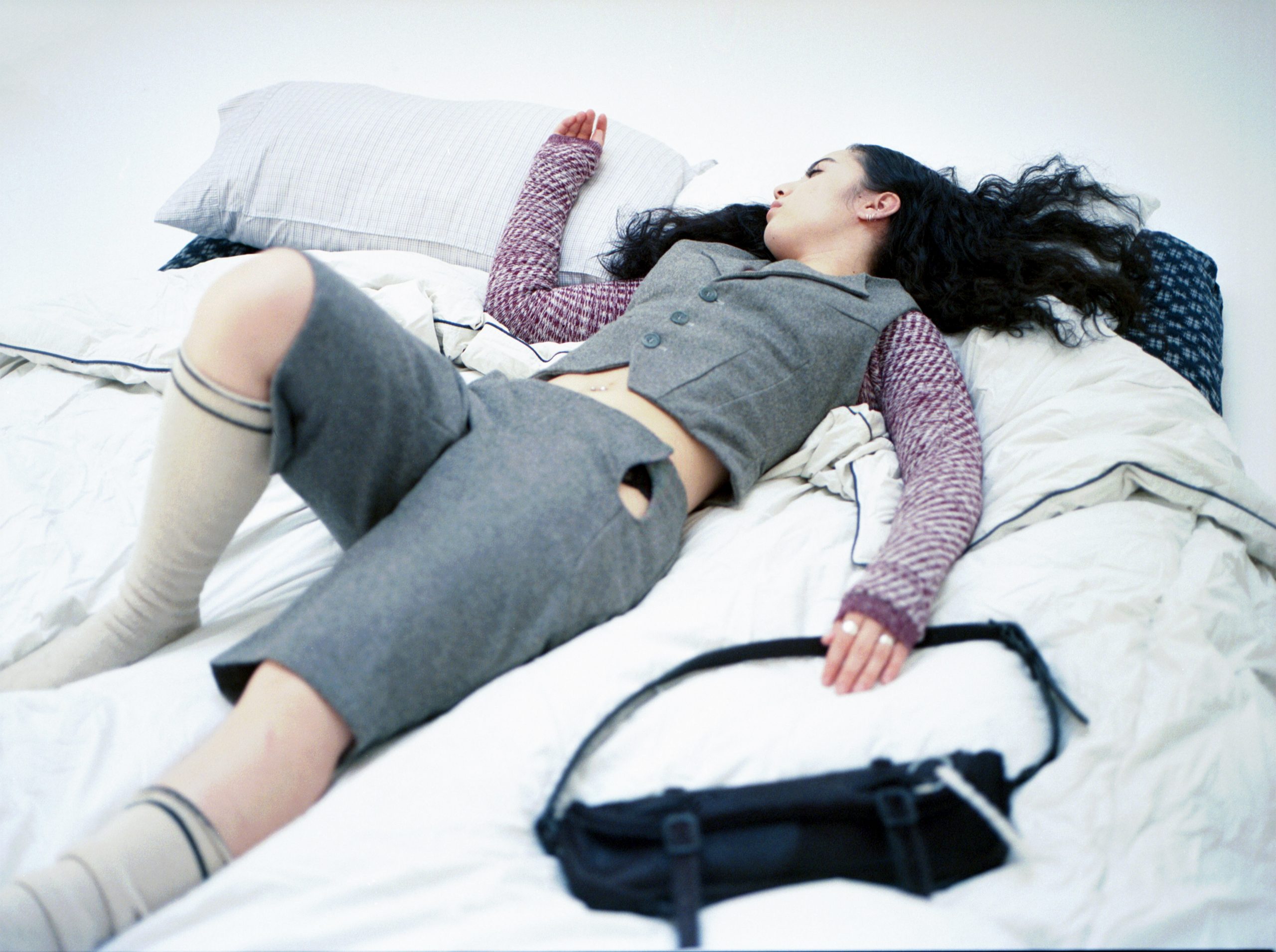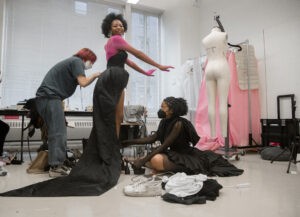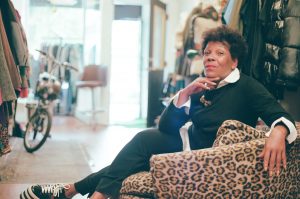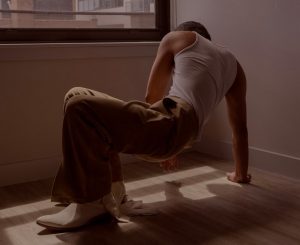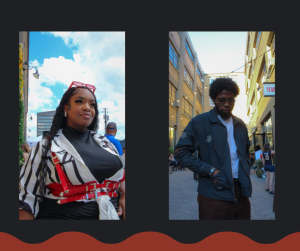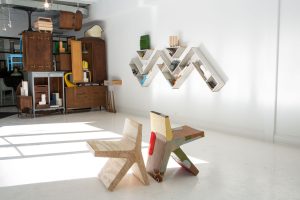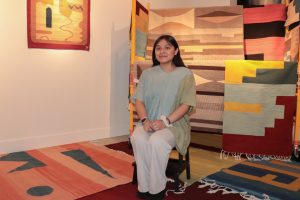FOLD/UNFOLD: fashion designers and artists on dress, tactics, community, and power in zhegagoynak/zhigaagoong (Chicago) and beyond.
One of my favorite fashion thinkers, Rian Phin, shouted out Olivia Rehm’s work in a podcast that I love and I almost choked on my water while driving. Phin taught me that design is inextricably enmeshed in the “sourceless image-scape” of contemporary fashion where we are “inundated by fashion image after fashion image on all social media platforms, with no meaningful explanation of where these images come from or what the historical context and significance of these images are.” Phin argues that we should be taking the time to meaningfully process fashion, and not just orient towards “visceral, hopefully viral reactions” to clothes.
What I love about Olivia Rehm’s work is that it is not flashy or viral; what attracts me to it is difficult to put into words and has grown slowly over a long period of time. It doesn’t feel like Rehm is designing for a “certain kind of woman,” a lá famous designers like Galliano or even for a certain kind of consumer, where the clothes shape the wearer into something without their input. Rehm’s focus is more skeletal. More spiritual, even. Simple shapes like boxers and button-downs get treated with a historical eye. An eye to the body beneath the clothes. In this way, Rehm is in lineage with her mentor, who showed her how to hold her pencil in order to more fully capture the way someone’s particular shoulder curved and how a shirt could drape to follow that curve.
In Rehm’s designs, the body beneath the clothes is allowed to breathe. The first piece that obsessed me was a bra she made without using any elastic but that adjusted to the body through a series of pulls and clasps. Although I had seen the piece online and thought it was beautiful, I didn’t know the extent of my love for the bra until I decided to do a studio visit and was able to touch the piece and experience the possibilities that being in proximity with it erupted in me. I had always wanted something that could actually adjust to the way my ribs move throughout the day, that didn’t make me feel sensorily weird, and that wouldn’t stretch out over time — but I hadn’t been able to name those things or even recognize them as fully fledged desires. Until I saw the bra in person, I didn’t know there was a designer actually making the work I unconsciously daydreamed about. I had been drawn to the work because Rehm’s attention to minute details jumped off the screen and made me want to know more. I wanted to physically experience the obsession that led to such care in a garment.
Rehm’s work is captivating and not easily digestible. She describes her approach to fashion as coming in bursts of interest. You are drawn to the clothes because Rehm’s obsession is obvious and you want to be enveloped in it by witnessing or wearing it. It’s possible to still feel the residue of her interest in the clothes themselves. She’s a designer who makes work in a values-based, non-consumerist oriented way, offering a context as well as a slowness that allows us to get dressed differently. To surface different desires and longings through what we wear.
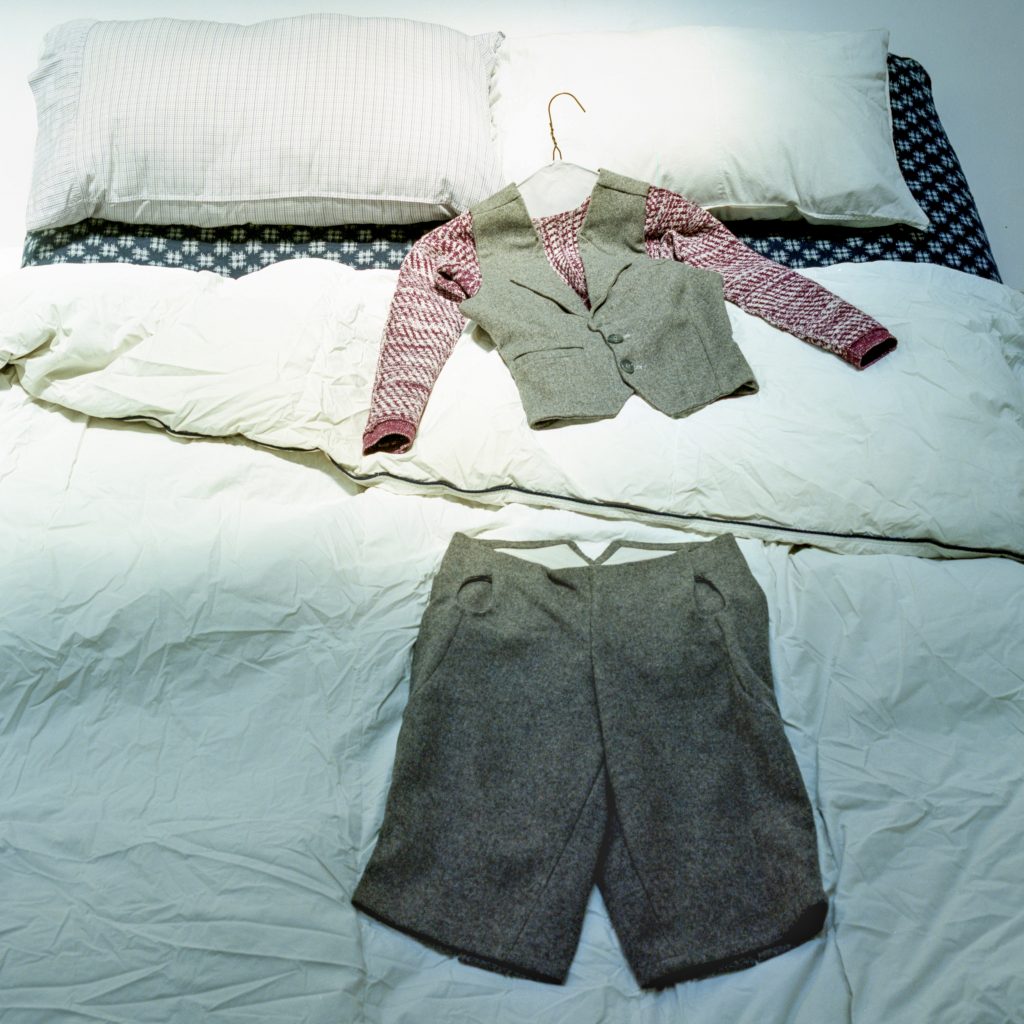
row särkelä: Have you had an interest in historical sewing since you were a kid?
Olivia Rehm: No, my interest started since I moved to Chicago almost four years ago. I got into looking at all these books that x-ray these extant garments that exist in the V&A Museum, and show the intricate stitching. I was sewing, and I was like, damn, I’m not very good compared to these amazing sewers of the past. I considered going to school for fashion sewing. I ended up pivoting to the route of seeking out an apprenticeship in Chicago.
rs: So you didn’t go to school for fashion design? Did you grow up sewing?
OR: No, I didn’t go to fashion school. I went to school in Milwaukee, for sculpture. Technically, my degree is in general Fine Arts. I learned how to sew from my mom. Then I went to college and didn’t sew at all. I came here to Chicago [after college], living and working with my friend Marissa Macias who was sewing in college. When we got our studio space together I just decided to try sewing more. I had never really thought about it super seriously, it was always just something I knew how to do. When I was in college, I did work in the sewing lab and I taught people how to sew, but I wasn’t doing it as a creative outlet. Once I started realizing that I really did enjoy it in a more serious way, I started reaching out to tailors in Chicago to try and find an apprenticeship. I worked with a tailor here in Chicago for about a year before the pandemic hit. That was really the most inspiring thing to me sparking my fixation on the craft of sewing.
His name’s Frank — the guy that I worked with — and he specialized in tailoring button-up shirts. I worked with him by helping him throughout the day, and then he’d give me homework to pattern shirts. He’d give me patterns that he had made or he’d give me a past client’s measurements, and then I would have to go and try to make the pattern myself and bring it back to him. At the end of the day, he would open up my pattern and critique it really quick before we all left, because during the day he wasn’t explicitly teaching me: he was working. He would open it up and tell me all the things that were wrong with it and then tell me to go do it again. I was really lucky to have met him. I have such a stigma against the idea of going back to school, I really don’t want to. I worked with him for under a year and it changed my life; I feel like I learned more than I could have in a classroom setting, because it was so direct and it was just me and him. There were other people working there, but he was one of the main tailors and I was his buddy all day.
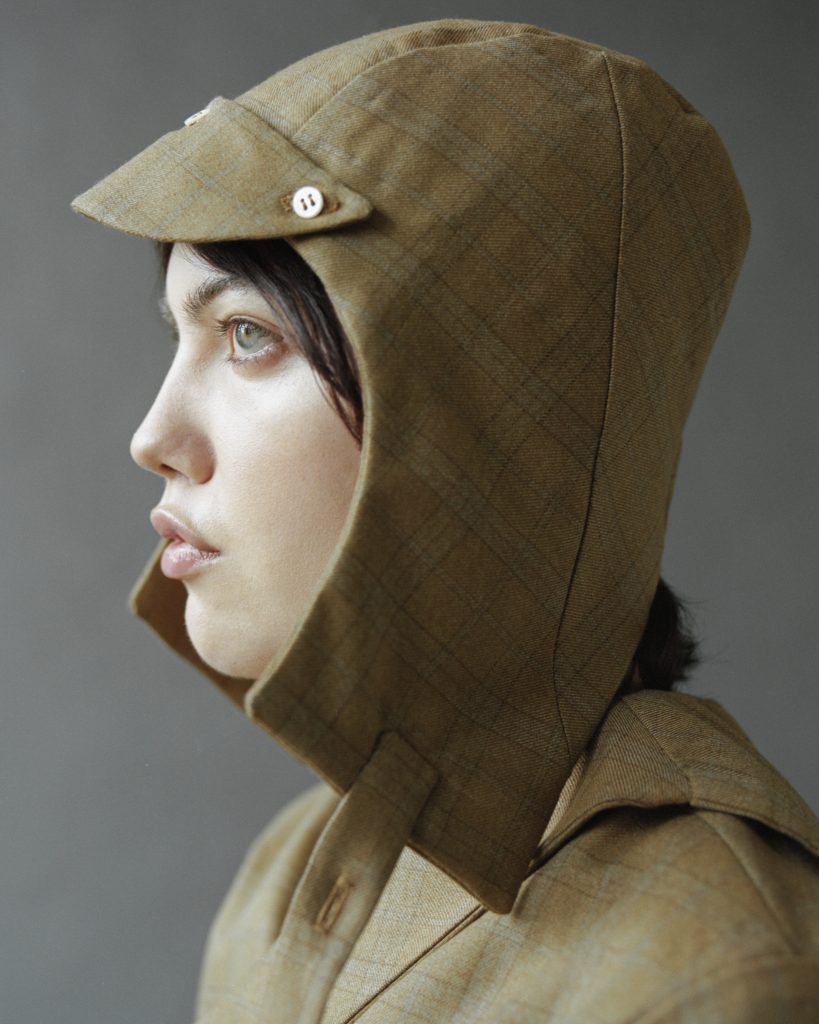
rs: Do you think having an apprenticeship would work for other people looking to gain the skills they need to be fashion designers, or do you think you need to have a certain skill level before being able to do that?
OR: I think it’s an amazing way to learn a craft based skill. I had emailed the shop and talked to the owner, who was different from the tailors. I went in and talked to the owner and he was like, “We don’t usually do this, I don’t know why you’re here, your sewing isn’t good enough.” He was telling me that this probably wasn’t going to happen. Then he was like, “I’ll take you downstairs, you can meet the tailors. If it works out and if they think they could have some use for you, then you can come and stay.” And I didn’t even show Frank any of my sewing. But he was a really spiritual person. When he told me that he would teach me tailoring, he said, “I looked into your eyes, and I knew you were serious. I will teach you how to sew.” So it’s kind of an exceptional circumstance, he just happened to be this really open and curious older man who was about to retire. I think he was excited by the idea of a young person wanting to learn from him. It is definitely not a common practice to have a traditional apprenticeship like that. I guess he just liked that I was serious enough that it was worth his time. It was a pile of the perfect moments accumulating. I got hired eventually, but worth saying that I worked there one day a week for free for like six months.
But I don’t think it really required me to be particularly skilled. I knew how machines worked and I was fairly confident in my sewing, but I was never formally taught in sewing or in fashion. And they didn’t really look at my resume. He showed me how to use this machine that sews buttons on. And while we were doing that, he gave me the whole line about looking into my eyes. I guess it was more of a determination and a seriousness than my actual sewing skills.
rs: Now that you’re doing this as a creative outlet, what makes you excited to make fashion?
OR: It’s a variety of things. I do have a pretty pure love for the craft of sewing and construction. Making patterns and putting more complicated pieces together is a brain puzzle that I really enjoy and that is exciting. There’s also the part of fulfilling needs in my day-to-day life and other people’s lives, making really pointed and purposeful clothing. The functionality of what I make, and having it be intensely useful and well-made is the most exciting part of fashion to me.
rs: I like that idea of fashion designers evaluating and meeting the needs of people around them.
OR: I am a pretty minimal person and when I was in art school, I always struggled with feeling like I was burdening the world with these creative objects. I was making sculpture, and I would make a thing, and then I would look at it like, “What are you doing? What is it? What’s it going to do? I don’t know. Does anyone want it? I don’t want it!” [Laughs] I love art, and I know the world needs art, but the art that I was making didn’t really align with my vision of the way I like to bring things into the world.
Sewing became a creative outlet where I could enjoy making things that could be really purposeful and specific, with an inherent use because it’s clothing. It will cover a body, and that’s its purpose. That simplicity is really fulfilling for me.
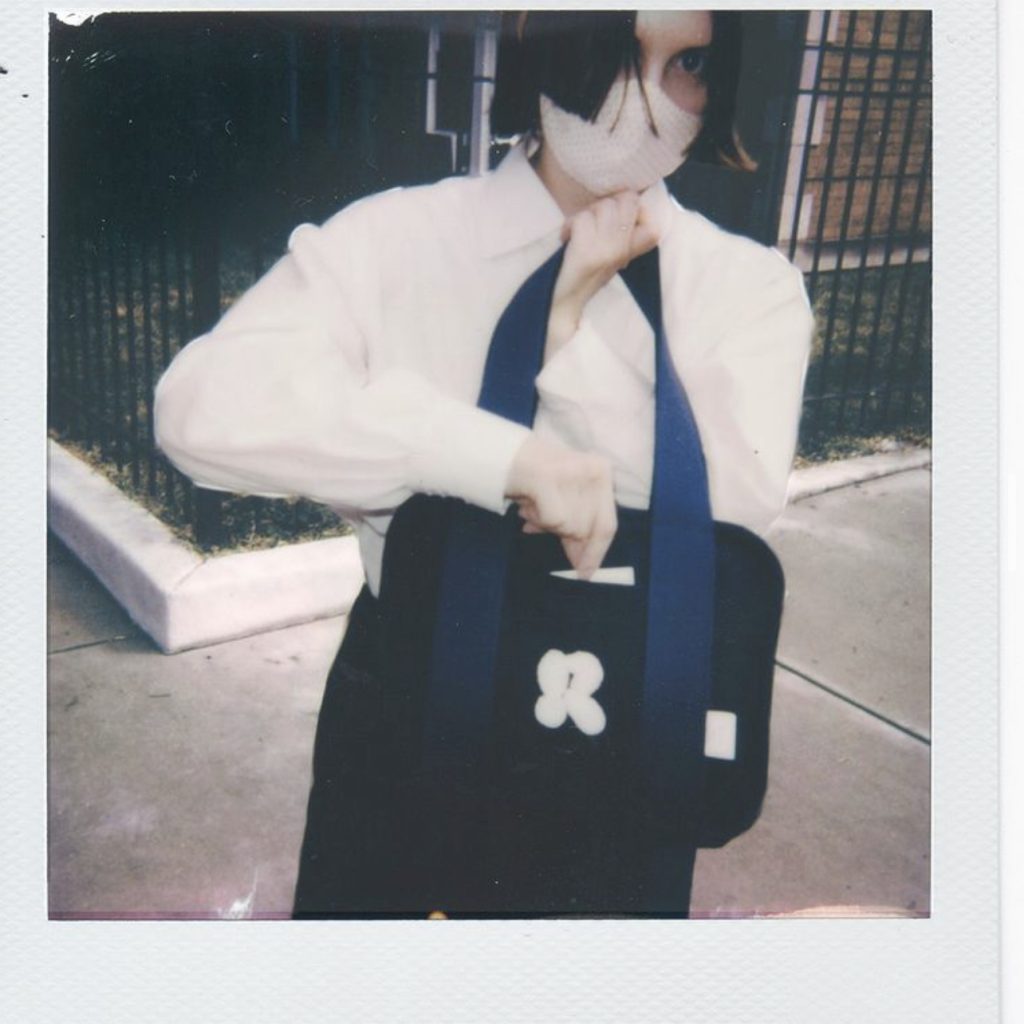
rs: How do you like to present your work?
OR: Honestly, I don’t really know. I suppose as disconnected from me as a person as possible. What I make is a big part of who I am, but I am not what I make. I like to be a few steps away when I show the internet what I’m up to. Currently, I’m struggling with the fact that I love to sew so intensely and I don’t want to give that up. I’ll make things far more complicated than they need to be, which is kind of incompatible with producing something or having it be widespread in a way that would be more lucrative. I have a hard time following a proper cycle of a collection. Usually, it’s just a burst of things, of a new thought. There was the burst of the bras, then I made these other things that are the wool and the plaid. Right now I’m working on a vest that’s branched off of that, and the bags. It’s as it comes to me.
rs: Is selling your work on Instagram supporting you enough financially? There seems to be a whole genre of direct to consumer that is very successful.
OR: Is it making me money? Yeah, it is a bit. I also have a part time job — so it doesn’t sustain me entirely. It needs some honing in, for sure, and a little bit more direction. I’ve been trying to sell to stores. I think it might be easier to sell directly through my site just to keep prices a little lower. It’s really difficult because everyone needs to make money, so I get that a store needs to mark things up. But no one that is buying from me is gonna spend that price on that right now, not through this platform, not in this time. I don’t know, maybe that’s something that’s just in my head. But I like to keep it as accessible as I can even though I know that it’s still expensive. Selling on my website allows me to not have to worry about the markups in stores, which are sometimes over double what I would sell something for. Also my wholesale price is pretty expensive still. I hand sewed way too much of it, and it takes me a stupid amount of time to make.
rs: Do you think you’ll retain that hand-sewn element in your work as you scale differently?
OR: Yeah, I’m searching for balance, for sure. Maybe trying to find what would be the most logical and efficient direction. Which I don’t have answers to.
rs: The world isn’t very logical. And especially right now, nothing makes sense! But I can’t stop believing in fashion.
OR: Yeah, it seems like a funny time to be doing what I’m doing. As much as I like to think that it wouldn’t matter what you wear, it somehow is undeniable that it does matter, every single day. You know those people who wear a uniform every single day? I’m like, wow, that would be a great idea. But for some reason, I’m not the same person every single day, I will not be satisfied in the same outfit every single day — I do need clothes. Otherwise, I’ll be depressed. I can’t reason myself out of that. And sometimes it’s my pajamas. And sometimes it’s a suit. And sometimes it’s a dress — it’s kind of rarely a dress, but I’ll put it in there because I do own a dress. Clothing is important. We have to put clothes on our body. When given the option, it becomes a serious endeavor.
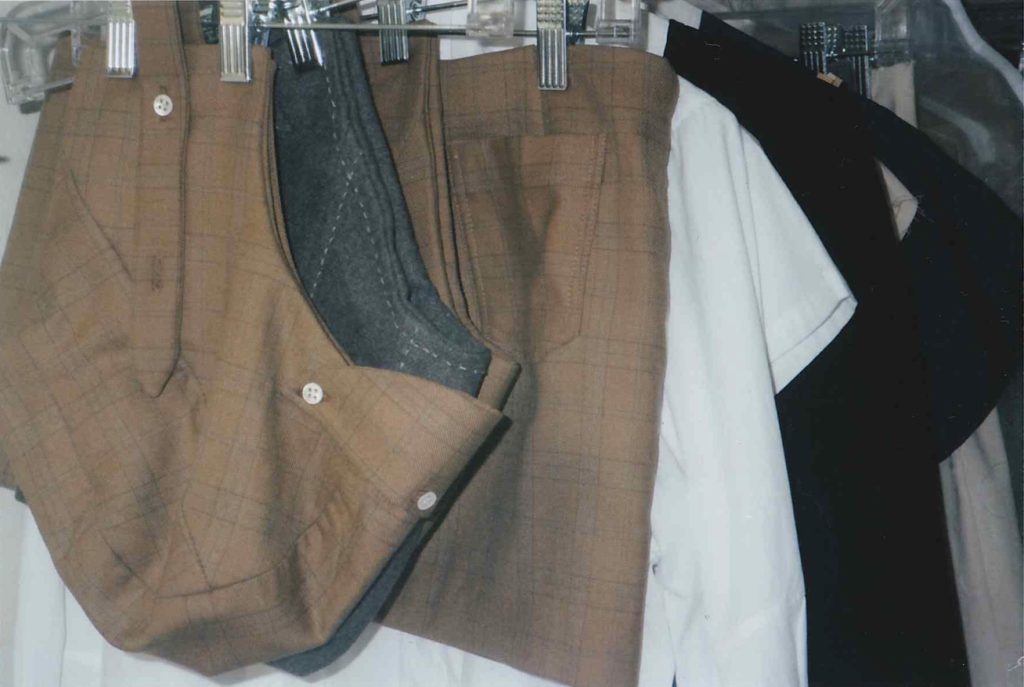
rs: Are you going to have a runway show anytime soon?
OR: I wouldn’t expect that anytime soon. I think I lean a little bit more towards making custom clothing for people. I love making tailored garments, which would be difficult in a runway setting. But runway is really fun and cool. One of the first times I sewed seriously was for a runway show, which is kind of an out-of-order way to do it. But it is a really fun way to display clothing.
rs: So you focus more on custom orders?
OR: Definitely. Within me sewing for myself, there’s me sewing my designs and selling them; me making custom variations of those designs for people; and then there’s also people coming to me with an idea and I can sew it for them. I don’t actively advertise that because that’s someone else’s idea that I’m just executing, like contract sewing whatever someone wants. I do that, or I hem people’s pants if they ask me, I hemmed my neighbors curtains.
rs: Are you still thinking of making a jewelry collection?
OR: Maybe someday. This is a wild, maybe slightly off topic backstory, but my parents are pottery collectors — they do other things, but they also collect pottery. When I was growing up, they would take me to this town in Minnesota called Red Wing that was part of this pottery brand called Red Wing pottery that makes crocks for salting foods and churning butter. My mom made these charms that were miniature versions of all of the collectible pottery that she would sell when she went to this convention. They’d have a big sale day where everyone would set up little booths in this gymnasium and she would sell them to all of the women collectors, and they would get charm bracelets from my mom. And I messaged her last week asking if she still had those charms, and she does. I’m having this nostalgic wave for these tiny replicas of vases that are enchanting my memory. So maybe I should talk to her jeweler. Because growing up I would go to this jeweler with her, and watch their consultations for these tiny charms. They had these beautiful greyhound dogs wearing bejeweled collars with precious stones and stuff. I was a kid and I was like, wow, this dog is the most amazing thing I’ve ever seen and these jewels are so crazy. I don’t know if I’m much of a dog person now, but I used to be obsessed with the idea of having a greyhound because of these jewelers and these fancy, docile dogs. I’ve been thinking about this memory a lot recently and I can’t wait to get all these charms from my mom when I go back to Wisconsin to visit.
rs: Would you ever go back to Wisconsin? Or do you feel like you’re in Chicago forever?
OR: I don’t think I would go back to Wisconsin to live, and I don’t think I’m in Chicago forever. I don’t know where I would go, though. I just feel like there’s a lot of world so it’s hard to think that I could be somewhere from graduating college onward. That just seems like a ridiculous thought. I think maybe honing in on my direction might be considering the best place to do that.
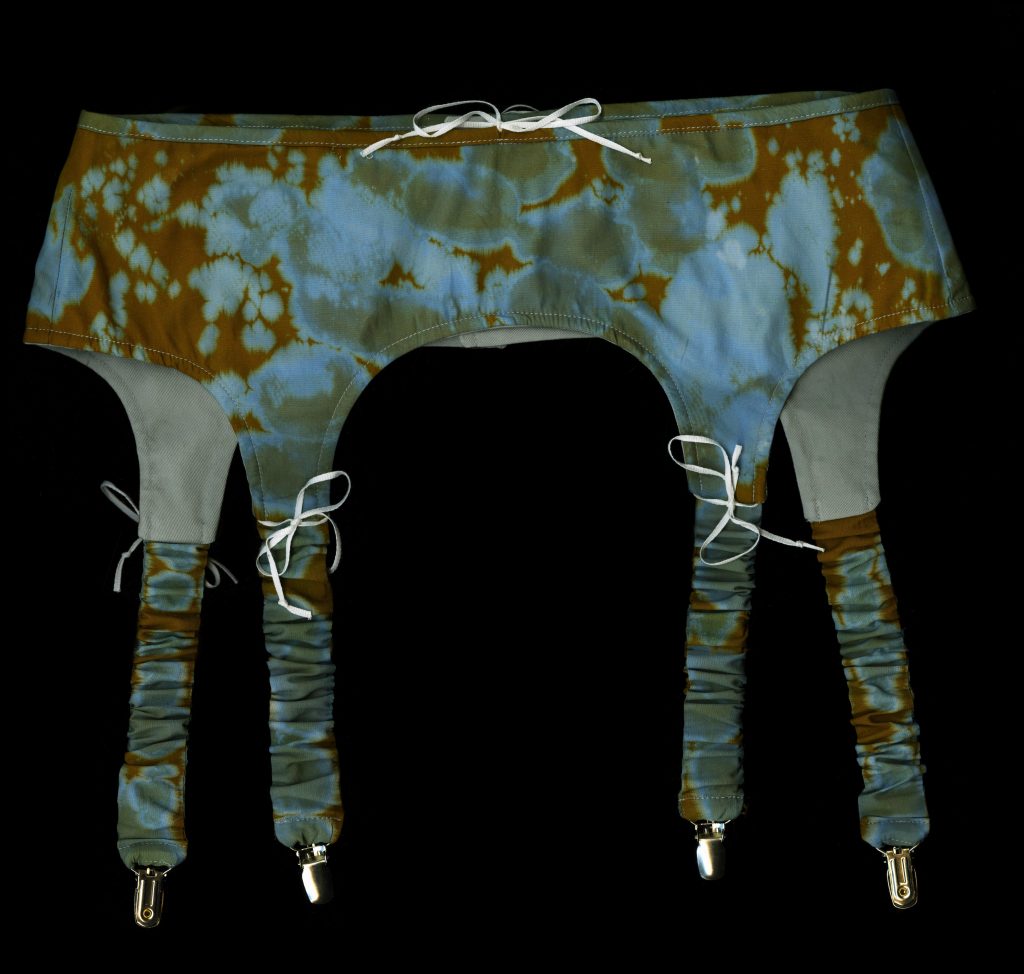
rs: What would be your dream direction — would you have a tailoring shop?
OR: Sometimes I think it’d be really sick to be a tailor. The tailor shop that I worked at was so straight male. I would often get criticized for making shirts for myself that were cut like a “man’s” shirt. If I could be a tailor for, like, everyone else [laughs] — not those guys, not the rich white straight dudes that would come in for their business suits. I’ll make suits for the lesbians, I’ll make suits for the non-binary people, I’ll make suits for that neglected majority. I feel like that’s an untapped market. Frank specialized in shirts, but the guy who did suits would always jokingly pretend that he was gonna steal me to be his apprentice — he would pull me over and show me little things about making a suit — and Frank would be like, stop, leave her alone, she’s my assistant. They were just some kind-hearted old dudes.
But suits are wild. I want to learn more about properly making a tailored suit. I wish I could still work with Frank. He’s retired now, but he told me that he would come pick me up from my house, take me to his house in the suburbs and that I could stay with him for a day and he would teach me a bunch of stuff and make me lunch. But he’s like 80 years old or something. And he says this stuff, and I’m like, when though, Frank? When are you picking me up? I haven’t seen him in like two years at this point. But maybe it will happen. I could bring him flowers or something. Sometimes I send him these long texts where I’m pouring my heart out, and he sends back, “Very good. Okay.” I’m like, do you know how much you mean to me? But yeah, he’s great. I have a lot of love for him.
Something that I learned from him that was kind of off-hand — and I don’t think he realized that I thought it was amazing — was when we were meeting with one of his clients. Right after the client left he was telling me all the things he was thinking about while he was with the client. He’d be like, “you see how this fits the shoulder, slightly sloped in this way? When I draw it, I’ll draw it with my arm.” He has a very analytical yet intuitive way of looking at a person’s body directly and translating it into pattern making. When he’d be pattern-making, he’d throw a couple of marks in for measurements, obviously, to make sure it fits. But he was never super anal about that. He was like, “I’ve been doing this for 50 years. I can see it. I can see this person’s body pulled off of them and [put] onto a piece of paper. I know how a body curves and when someone’s posture is like this, this is how you translate it into a line.” That’s poetic to me, it’s beautiful. It’s a pretty rare way to think about it.
rs: It sounds like a very embodied way to make patterns.
OR: Yeah, that’s what I’m working towards. After Frank retired, I was still at the shop for a little, and the owner asked if I could sew the shirts, and I was horrified. No! I have no experience or skill in comparison. He’s probably made thousands of shirts in his life. He could draft a pattern when a client left in about 15 minutes. He would tell me that right when the client left, when they’re still in your mind, that it’s the time to pattern the shirt. And he would do it so fast. It would take me an hour to draft a pattern. He had a lot of stencils that would help with the curves for collars and stuff because it needs to be precise. But the body part, the big fields, he could just do [gestures with arm]. So graceful. He would always show me how to hold my pencil. He was spiritual in his way that he made clothes and that’s something that I would like to be able to do.
rs: Do you feel like you’re spiritual when you make clothes?
OR: I am the most [spiritual] when I make something for someone specific or when I make something for myself. It’s really easy to take on that energy. I think it’s why I love doing customs. I’m not exactly where I want to be in terms of skill yet, so there’s still some missteps and fumbles along the way in terms of the gracefulness that he had.
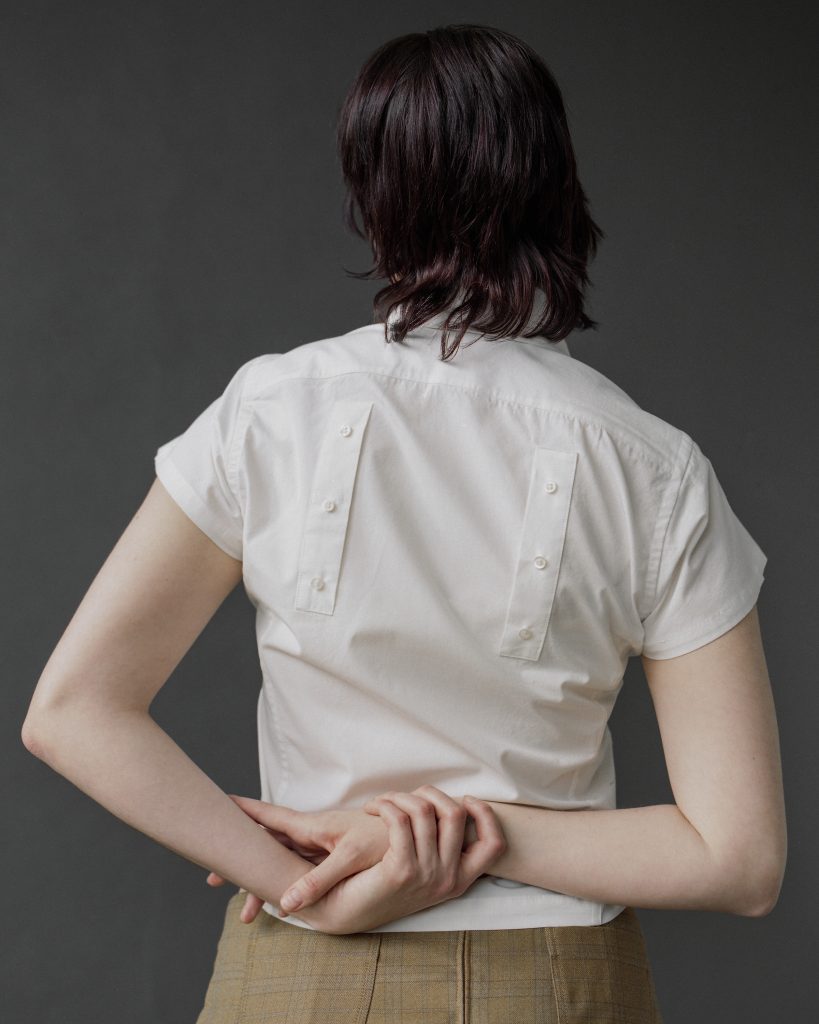
rs: Do you feel like Chicago is a good place for you right now for being in a creative community?
OR: I think the best and the worst part of Chicago is that I can easily fall into solitude in working, and getting in my head — not necessarily in a bad way but in terms of a fully focused sort of way. I have no intentions of moving to New York — I’ve lived there previously and I don’t really connect with New York — but when I see people there, I’m like, wow, that community looks really exciting. Different places offer different things, and Chicago is a really peaceful place. I’m more of a mellow energy person, so it does suit me most of the time. I’m much more introverted and can be a hermit. I have in my head a thought or a vision and it’s hard to dissuade me. In the world of New York, I would just be overwhelmed and it would maybe confuse me [laughs]. Chicago gives me a lot of time to not be stressed about my rent, and I’m very lucky to have a very affordable studio, and I have some very pure friendships here. Chicago has given me a lot of lovely things while I’ve been here, and I met a lot of lovely creative people in clothing. I’ve met a good amount of people here who have given me new perspectives and showed me new things in terms of clothing and creativity.
rs: Who are some of those people who inspire you in the Chicago clothing scene?
OR: People who I’ve met here who are peers — Nathan Hoyle who does a lot of reworking clothing; Holly (@knit_b0dy), she does a lot of knit and tattoos and just moved to New York; Aliyah (@3xalted1) who does beautiful interesting things and we’ve been in a couple of sales together; Marissa, my bestie (@_Petrich0r.us); Maeve (@averagegrilnotcrazy). When I really connect with someone, it’s pretty special, because I can be so stubbornly reserved sometimes. I’ve made a lot of special connections here. I love people who are genuinely excited about things and are genuinely themselves to a fault — they can’t help it but be themselves. Those are the most beautiful people. It can be in an extroverted way, or a subtle way. Those are things that I admire in people.
rs: What’s up next for you? What new things do you want to make?
OR: I want to do more stuff with suiting, I want to make myself a suit. I want to make some more bags. I was working on one today. I bought this leather sewing machine from my neighbor. Every once in a while I hit him up asking for this really specific leather tool that I need to borrow. He has all the tools because he mostly does hand sewing. I’ve been painting the edge of the strap of this bag I’ve been working on. Before this interview I think I got myself high from the fumes of doing this painting, I was sitting in this chair with rosy cheeks and really tired eyes. I think I’ll pivot to focusing on the bags, because the people love them. Sometimes you have to give the people what they want [laughs].
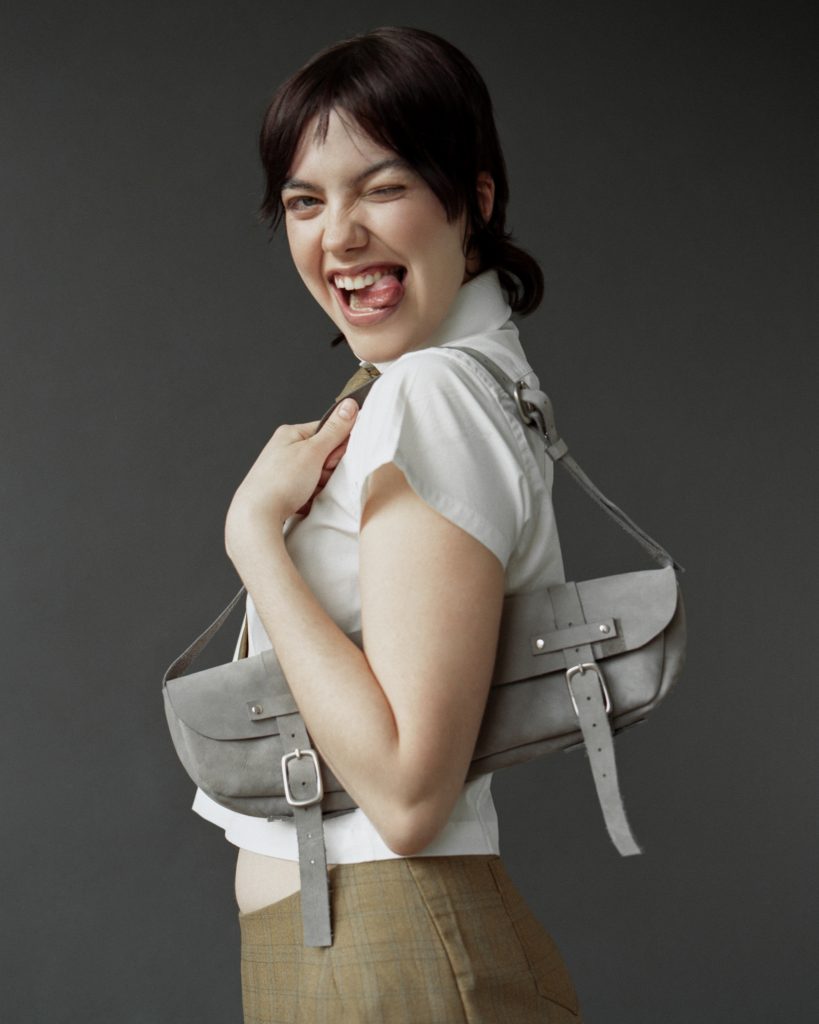
rs: We want those hotdog bags!
OR: Maybe I should make a hamburger-style one too, like when you’re a kid and you learn how to fold, hot dog versus hamburger. I have another idea for a bag, and I just bought one of the buckles. The next bag I want to make has big buckles. I need more structured leather for it, too. I have no knowledge of leather, actually, I just go to the store and feel it out.
rs: What makes a leather sewing machine different from a heavy duty sewing machine?
OR: My machine is a post bed machine. Well, not quite. [On] mine, the post is parallel to the floor instead of perpendicular. It’s good for going around really tight turns, and it’s good for making bags. A heavy duty sewing machine with a flat bed could sew the leather that I use, but it would be difficult to sew the shapes around the corners.
rs: It’s cool that your neighbor is a leather worker.
OR: I was taking the trash out, and he was like, what are you guys doing in there? And I was like, oh, we sew. And he was like, I sew! He said he makes leather bags and is selling his sewing machine. A few months later I bought it.
rs: Who are three designers working now whose work you respect?
OR: Kiko Kostadtinov, Saint Sintra, A.F. Vandevorst.
You can find more of Olivia Rehm’s work at renmei.me.
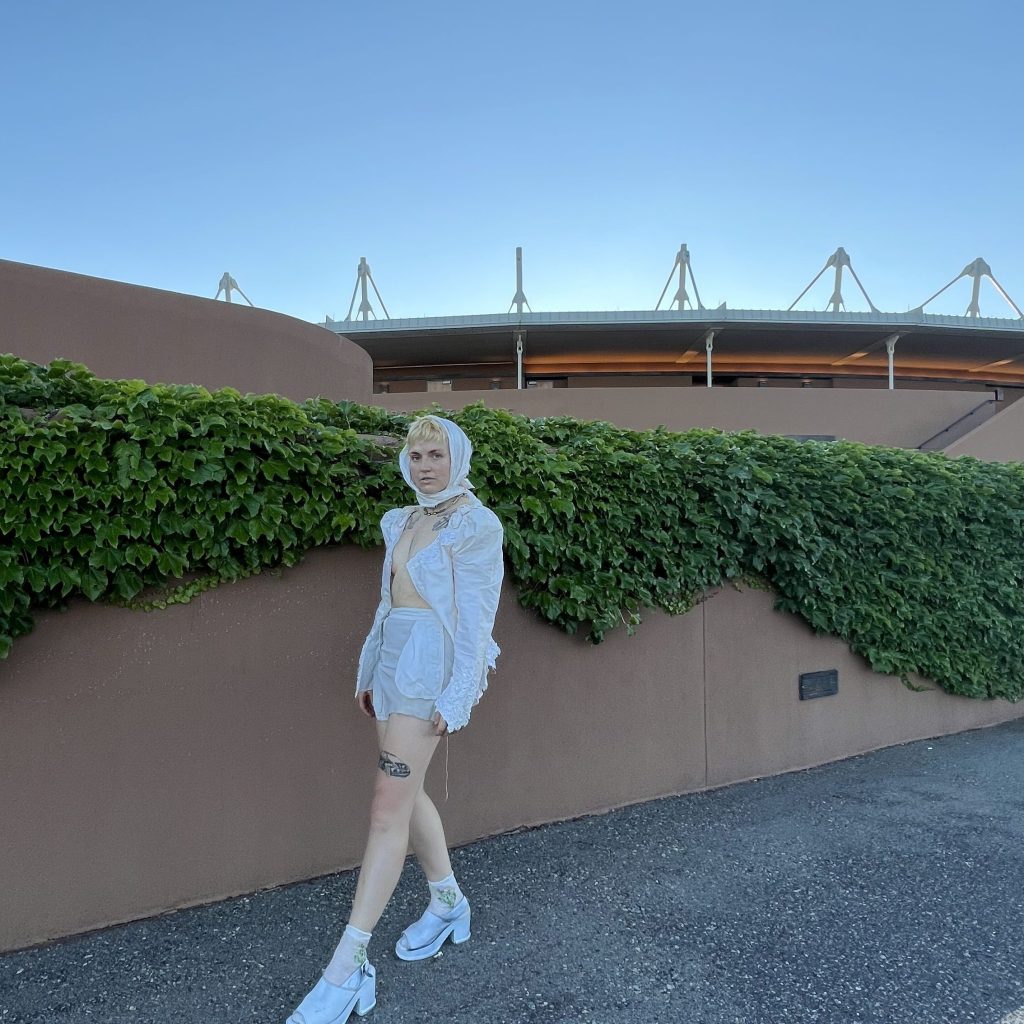
About the Author: row särkela is an artist, anarchist, and independent researcher born in Tiwaland. särkelä is currently focused on the ways that fashion engages with racial capitalism’s ideology of infinite growth and the human as a strictly economic agent, homo oeconmicus (Sylvia Wynter). särkela writes, “I see fashion as a lateral tactic for everyday people to practice our politics. Everyday when we get dressed, we have the opportunity to create worlds where care, sufficiency, and autonomy are the norm.” In FOLD/UNFOLD, särkelä interviews fashion designers in the midwest about their work and how it relates to what they want to transform in the world, politically and historically. You can find särkelä on instagram as @hyphaenate and follow their substack for unhinged fashion rants.
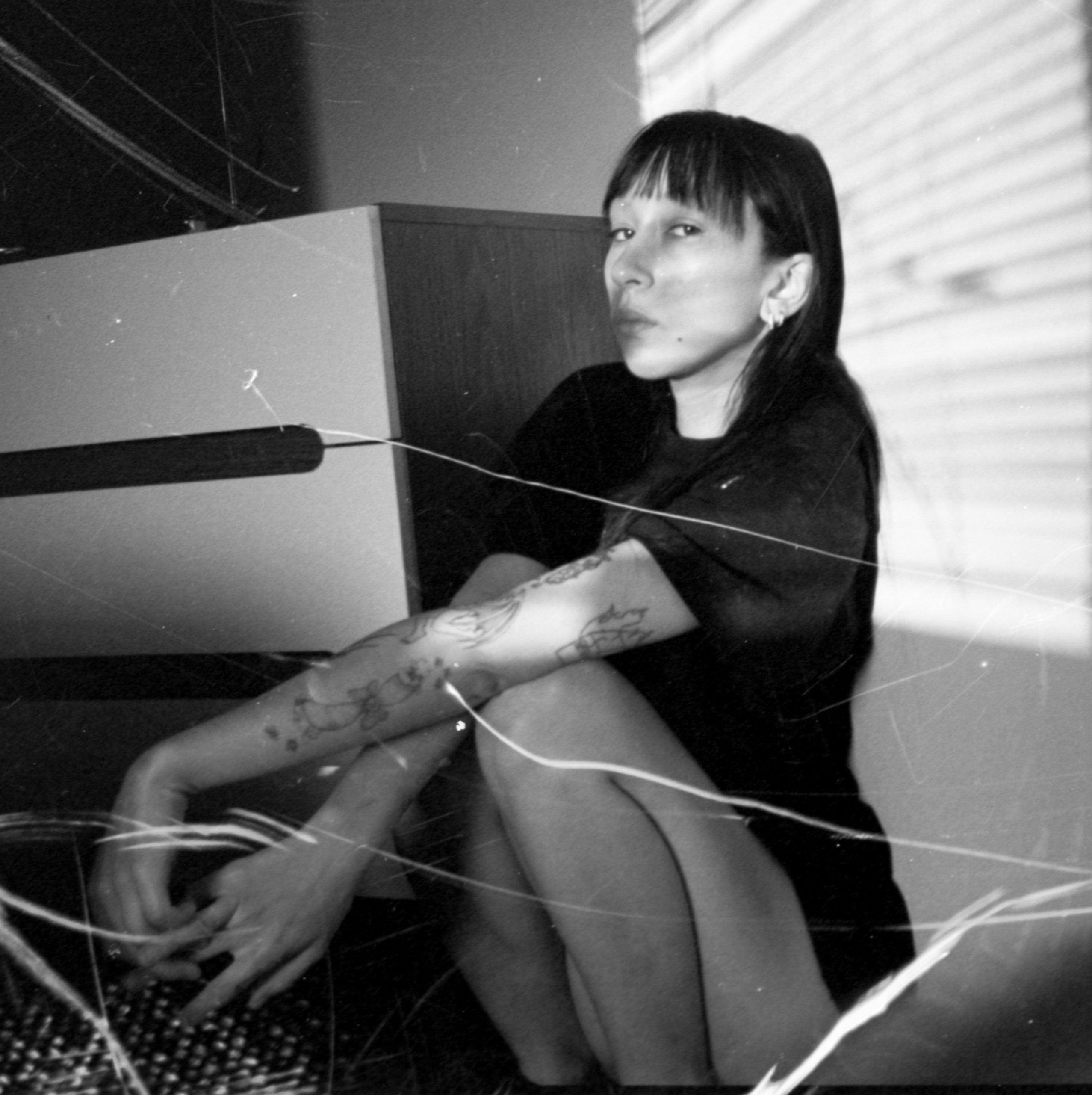
About the Photographer: Anna Claire Barlow is an analog photographer based in Chicago. She prefers to work with the traditional processes of photography using the darkroom and printing making techniques. Barlow plays with the elements of chance through experimentation. Through the knowledge of the traditional values of photography it has allowed Barlow to expand into her environment. This environment inspired Barlow to document the lives of the artists she surrounds herself with. After moving from a traditional town in Illinois, Barlow began to admire those who felt comfortable in their own skin and felt this needed to be celebrated. She then began to intertwine fine art and fashion through documentary photography.
